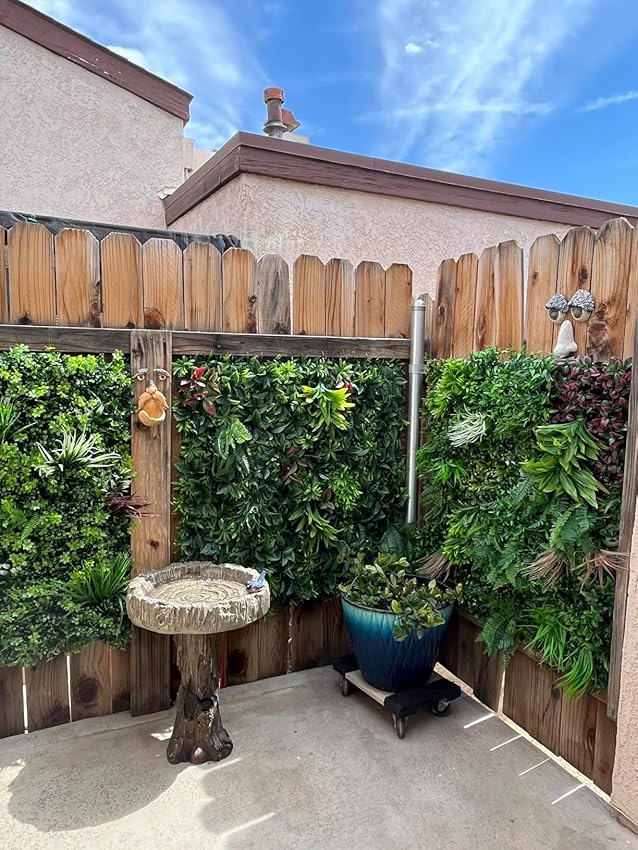Soil improvement in vertical gardens needs to take into account lightweighting, water retention, air permeability and nutrient sustainability, while also adapting to the special environment of three-dimensional planting (such as thin substrate layer, high irrigation frequency and restricted plant root system). The following analysis is conducted from four dimensions: matrix formula optimization, physical structure improvement, chemical nutrient regulation, and biological activity enhancement:
Selection of basic materials
The mixture of coconut coir and peat soil: Coconut coir (coconut shell fiber) provides excellent air permeability and water retention, while peat soil enhances the water-holding capacity and acid buffering effect of the substrate. When the two are mixed in a ratio of 3:1, it can significantly reduce the weight of the substrate while meeting the needs of plant roots.
Addition of perlite and vermiculite: Perlite can improve the permeability of the substrate and prevent water accumulation. Vermiculite can adsorb nutrients and release them slowly, prolonging the utilization rate of fertilizers. The recommended addition ratio of the two is 10%-15% of the total matrix.
Supplementation of functional materials
Slow-release water-retaining agent: By adding polyacrylamine-based water-retaining agents, it can absorb hundreds of times its own weight in water and release it slowly during drought, reducing the frequency of irrigation.
Biochar: By carbonizing agricultural waste (such as straw and rice husks) and adding it to the substrate, it can enhance water retention, adsorb heavy metals and improve microbial activity.
Hierarchical design
Bottom drainage layer: Lay 3-5cm thick ceramsite or gravel at the bottom of the planting container to form drainage channels and prevent water accumulation in the substrate.
Middle planting layer: Use the improved lightweight substrate, with the thickness controlled at 10-15cm to ensure that the root system has sufficient growth space.
Top cover layer: Cover with a layer of pine needles, bark or vermiculite to reduce water evaporation and inhibit weed growth.
Regulation of matrix porosity
The porosity of the substrate can be increased by adding coarse sand or rice husks to prevent substrate compaction caused by long-term irrigation. It is recommended that the porosity be maintained at 40%-50%, among which the proportion of porous pores should not be less than 15%.
Combination of organic fertilizer and slow-release fertilizer
Well-rotted compost: Add 5% to 10% of well-rotted compost to provide long-lasting nutrients and improve the substrate structure.
Slow-release granular fertilizer: By adding slow-release fertilizers such as coated urea and potassium dihydrogen phosphate, it ensures that nutrients are continuously released for 3 to 6 months, reducing the frequency of artificial fertilization.
pH value adjustment
The pH value of the substrate for vertical gardens is recommended to be controlled between 5.5 and 6.5 to meet the needs of most plants. If the substrate is slightly alkaline, sulfur powder or humic acid can be added for adjustment. If it is slightly acidic, add lime or plant ash.
Inoculation of beneficial microorganisms
Adding microbial agents such as nitrogen-fixing bacteria and phosphorus-solubilizing bacteria can promote nutrient transformation and enhance the disease resistance of plants. The recommended addition amount of the bacterial agent is 0.1%-0.3% of the total amount of the substrate.
The utilization of vermicompost and mycelium
Earthworm castings: Rich in humic acid and microorganisms, they can be added at 5% to 10% of the total substrate, significantly improving the substrate activity.
Mycelial network: By inoculated with fungi such as Trichoderma and mycorrhizal fungi, a mycelial network is formed, which enhances the air permeability of the substrate and promotes the growth of plant roots.
Lightweighting first
The weight of the substrate in vertical gardens needs to be strictly controlled to avoid structural deformation caused by overloading. It is recommended that the dry weight density of the substrate does not exceed 0.8g/cm³ and the wet weight density does not exceed 1.2g/cm³.
Dynamic adjustment
According to the plant growth cycle and seasonal changes, regularly test the pH value, EC value (electrical conductivity) and nutrient content of the substrate, and supplement organic fertilizer or slow-release fertilizer in a timely manner.
Prevent diseases and pests
When improving the substrate, it is necessary to avoid using uncomposted organic matter to prevent the breeding of pests and diseases. Meanwhile, a small amount of diatomite or neem oil can be added to inhibit nematode and fungal diseases.
Case: Substrate formula for vertical Gardens in Gardens by the Bay, Singapore
A three-dimensional planting with low maintenance and high survival rate was successfully achieved by using a mixed substrate of coconut coir (40%), peat soil (30%), perlite (20%), and well-rotted compost (10%), and adding 5% biochar and 0.2% slow-release fertilizer.
Common Problems and Solutions
Substrate compaction: Regularly loosen the soil or add vermiculite and coarse sand to improve the structure.
Insufficient nutrients: Supplement slow-release fertilizers or spray trace element fertilizers on the leaves.
Poor drainage: Check if the bottom drainage layer is blocked or increase the number of drainage holes.
Through the above improvement strategies, the substrate of 3D artificial vertical gardens can achieve lightweight, high air permeability, long-lasting nutrient supply and enhanced biological activity, providing a stable and sustainable environment for plant growth, while reducing maintenance costs and structural risks.

Contact: Amy
Phone: 86-15311787313
E-mail: info@foszmac.com
Whatsapp:86-15311787313
Add: Fengtai District, Dacheng Road, No.24 Building, Room 203, Beijing, China